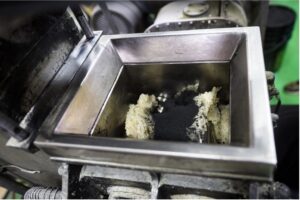Patagonia Develops First End-Of-Life Solution For Wetsuits
Recovered carbon black from retired Yulex® wetsuits and tires used as components to make new ones
Patagonia, as the industry leader in environmentally and socially responsible surf gear, is proud to share the co-development of a groundbreaking circular solution for wetsuits with Bolder Industries, a Boulder, Colorado-based circular solution provider for rubber, plastic and petrochemical supply chains.
Patagonia’s journey into less toxic, neoprene-free alternatives in wetsuit materials began when they partnered with Yulex® in 2008 to develop a bio-based rubber as a replacement for Neoprene. This wetsuit rubber comes from the sap of the hevea tree, instead of crude oil or limestone. Four years later, they released their first neoprene-free wetsuit, and first ever Yulex® wetsuit; and in 2014, they gave the game-changing biorubber recipe to the wetsuit industry at large. With recent adoptions of Yulex® by other wetsuit brands, Patagonia hopes to see this collection program grow as more Yulex® wetsuits enter the market, contributing to circularity.
Earlier this year, Patagonia began collecting end-of-life Yulex® (natural rubber) wetsuits so that they could be broken down at the molecular level by Bolder Industries to be used as carbon black in the dyeing process of future Yulex® wetsuits. Carbon black is used to dye the wetsuits’ recycled nylon lining and accounts for about 15 – 20 percent of Patagonia wetsuits’ rubber foam.
 Bolder Industries developed an industrial process to reclaim carbon black from end of life tires (ELTs), which it sells as BolderBlack. Bolder Industries founder and CEO Tony Wibbeler says Bolder’s method is 85 percent more sustainable than traditional carbon black production.
Bolder Industries developed an industrial process to reclaim carbon black from end of life tires (ELTs), which it sells as BolderBlack. Bolder Industries founder and CEO Tony Wibbeler says Bolder’s method is 85 percent more sustainable than traditional carbon black production.
Production of Bolder Industries’ BolderBlack® uses 90%+ less water and emits 90%+ fewer greenhouse gases than traditional carbon black. Bolder will mix old wetsuits with end of life tires so enough BolderBlack is produced for each suit.
Recovered carbon black produced from end-of-life tires and old Yulex® wetsuits makes up 10-20 percent of Patagonia’s wetsuit rubber ingredients, the company said.
“At Patagonia, we strive to build the best products and constantly improve everything we do by developing new ways to do things. While collaborating on this material with Bolder Industries, we discovered that recovered carbon black from rubber tire scraps and Yulex® wetsuits can be utilized to not only solution dye wetsuit materials but also black fabrics and trims to make products such as packs and jackets. We are excited to continue to find new ways to use this innovative new material and share it with industry, “Mackenzie Warner, Patagonia Material Developer, said.
Patagonia collects end-of-life wetsuits at Wetsuit Forge, its on-site wetsuit research, development and repair center, where zippers are removed, and the suits are shipped to Bolder Industries, where carbon black is extracted from the wetsuits and other rubber scraps such as car tires. The reclaimed material then goes to Patagonia’s manufacturer, Sheico, where the new wetsuits are manufactured.
The first BolderBlack Patagonia wetsuits are set to go on sale in 2025.
“It’s a circular solution, not just a sustainably sourced or a bio-based material,” Wibbeler said. “The cool part about this is that it’s wetsuits to wetsuits.”
© Scrap Tire News, July 2024






